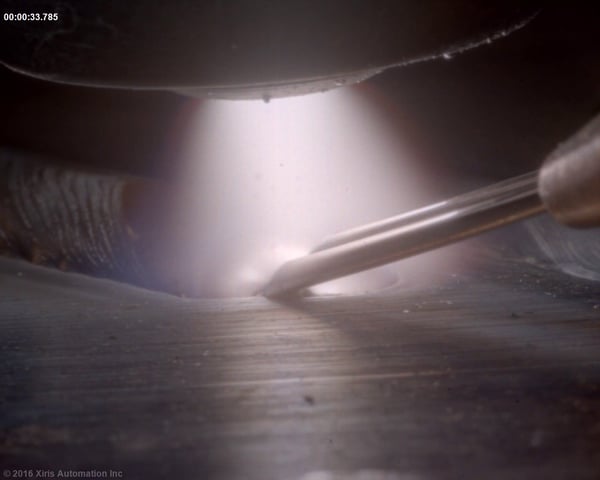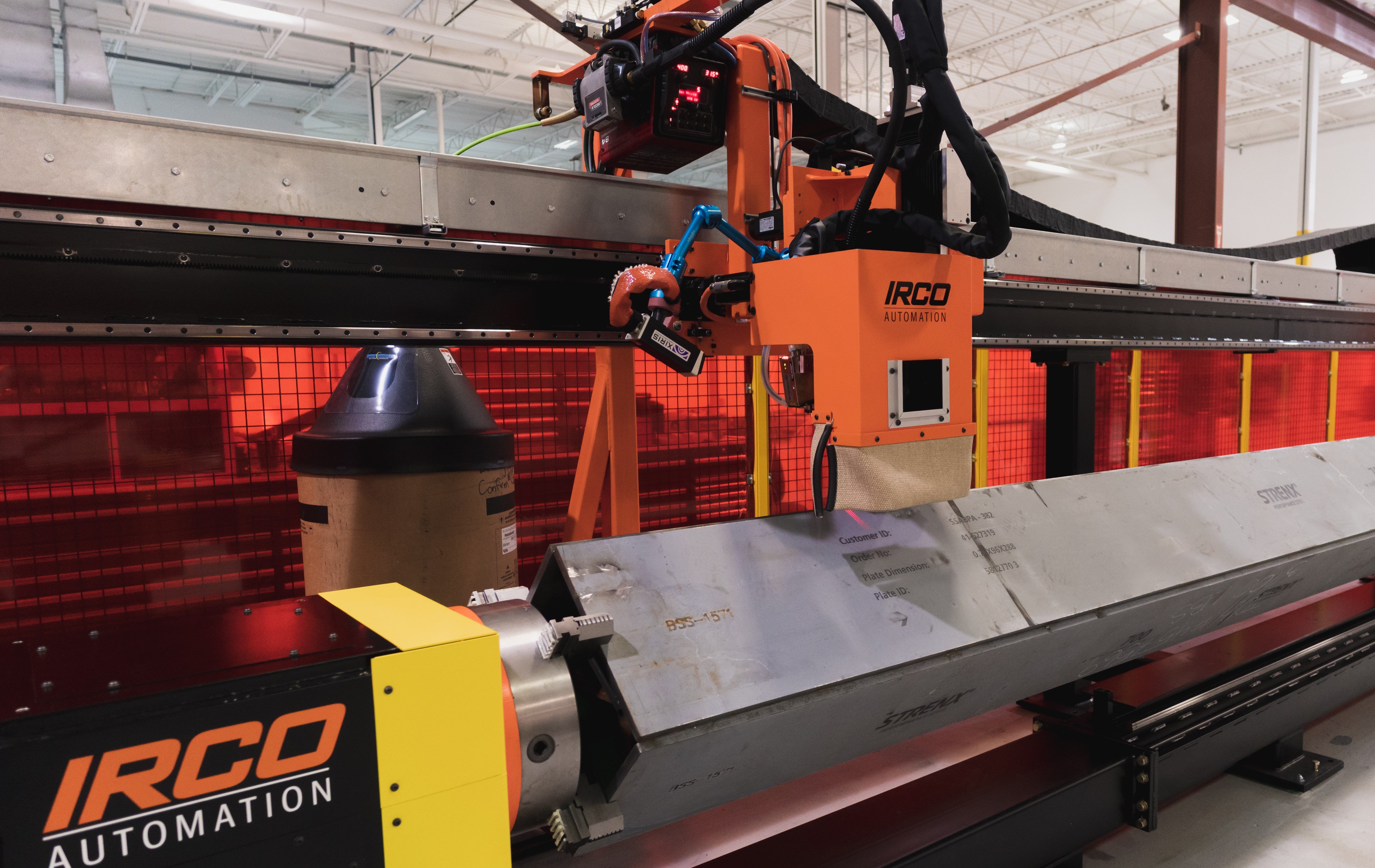Of greatest interest to most users of Additive Manufacturing using Direct Energy Depostion (DED) processes is the ability to constantly monitor the deposition process and to stop the process if the deposition goes awry. DED power sources generate a lot of light which is difficult to properly image using a traditional camera. By using a Xiris Weld Camera placed around the DED head to monitor the DED process, an operator can stop the deposition process and repair the defective region then resume the deposition without adding additional material on top of the defective area.

A detailed image of the Additive Manufacturing process, captured by a Xiris Weld Camera.
With a Xiris Weld Camera, the bright light arc from the DED power source can be clearly seen as well as the detail of its immediate surrounding environment. Here are 5 areas where the operator is able to see more details of the additive process with such a camera:
Amount of shielding gas being used (Plasma or TIG)
With a clear view of the arc used to melt the fed powder or wire, operators can monitor how much shielding gas is being used and whether adjustments are needed
Alignment of weld torch to previous layer
With a clear view of the previous pass of material, the operator can make sure that the DED head is tracking the layer properly.
Keyhole spot size, location and shape (Laser)
All features of the molten material being deposited can be better monitored with a clearer view of the weld environment.
The powder or wire being deposited
With a clear view of the arc used to melt the fed powder or wire, operators can monitor how much shielding gas is being used and whether adjustments are needed
The quality of the resulting melt pool and formed final bead.
Looking for dross, good quality melting and proper wetting in the melt pool and proper final bead shape one the bead has cooled is possible with a weld camera as the operator can see enough detail for these features to be visible.
Summary
By adding a Xiris weld camera to a DED process, operators can ensure that their parts quality is optimized during production and expensive rework is avoided.



.png)


